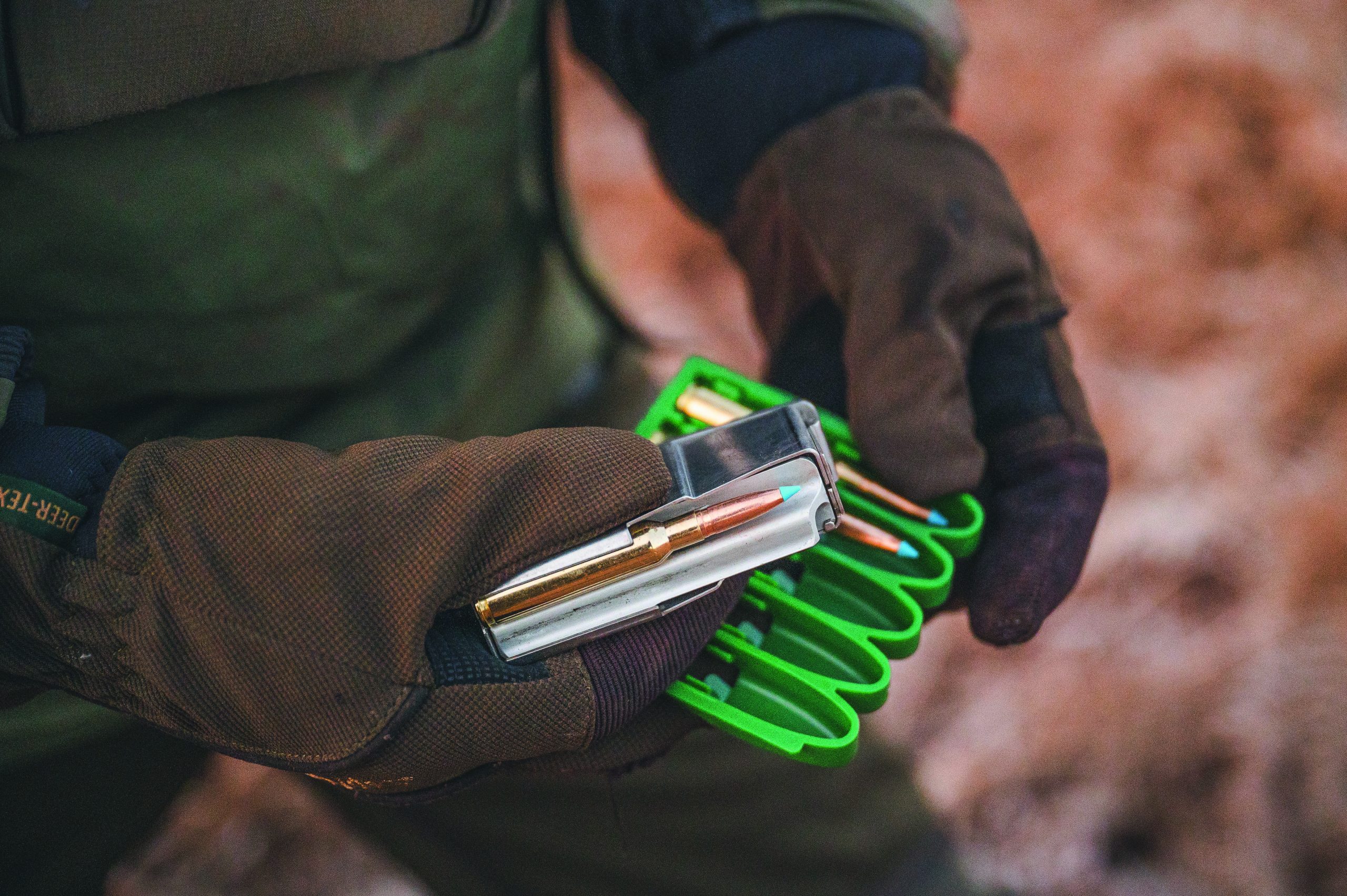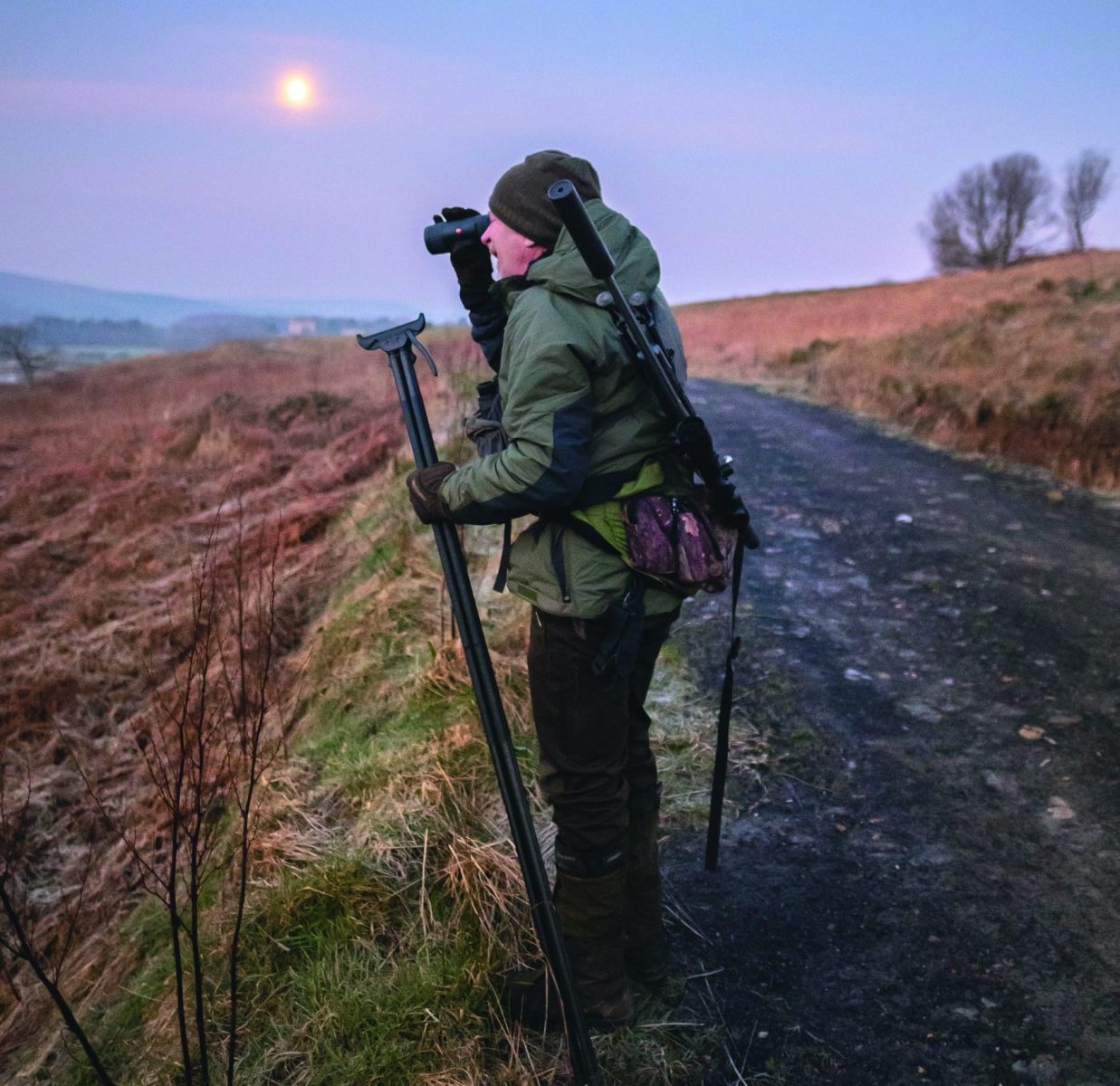As the roebuck season opens, Chris Dalton heads out before dawn to try out non-toxic ammo on a suitable cull beast
There are plenty of dates in the stalking calendar that I look forward to. I love stalking does during snowy Highland winters, calling roebucks during their rut in late July and listening to the eerie and haunting whistles of sika stags under an October moon. But if I had to single out just one date, it would have to be early April and the opening few days of the roebuck season.
The joy of early-season roe starts with the changing of the clocks, the warmer weather and the longer daylight hours. My dawn stalking forays start while the rest of the world sleeps. I relish the sense of solitude on those early mornings when I return for breakfast as most are only stirring. It’s a special experience to pause and listen as the light breaks over the horizon and the dawn chorus is at its peak, with hundreds of bird mating calls echoing around the woodland.
This is exactly what I was doing on my first outing of the season on 1 April. As I savoured the first warming beams of light on my face, movement across the valley drew my eye down to the edge of a winter-sown rye field. Rye is grown extensively around my Garryloop HQ and has really flushed in the past few weeks after a top dressing of fertiliser. It is clearly nutritious because it has been drawing the roe from cover for the past fortnight or so.
Play-fight
I watched on as a couple of young bucks engaged in some sparring. At this stage it was friendly and playful, a half-hearted affair that will no doubt prepare them for bigger battles to come. As they clashed antlers, I moved along the woodland margin for a closer look. I dropped down along the edge of the wood, out of sight, and into the raised bank of a large drainage ditch. The ditch was recently excavated and from here I could glass across the recently drilled fields.
The young bucks had stopped sparring but had now been joined by some other deer, which were filtering down the edge of our river boundary. They were working back to the wood via an open gate; I counted nine in total. All bar two were young bucks and, unusually, all around the same age. My earlier spring count in this corner of the ground had confirmed a mature resident buck with a couple of does and assorted followers. I had no idea where the current group came from but as they were in situ I made the decision to return the following day.
I’m always up early but this morning I was up well before I needed to be, keen to start my first roebuck stalk of the year. The local village slept as I drove through. The only sign of life came from the little deli, with the forestry workers calling in for a bacon sandwich. I drove past, then pulled in close to the railway line. From here, I walked under the railway bridge to the edge of a scrubby bank, where I began to glass.

Chris Dalton opts for the solid copper Sellier & Bellot Blue in 120-gr, a non-toxic round he rates highly
From my vantage point, I could see the edge of the deer’s favoured field. You can never guarantee anything while stalking, but I was as sure as I could be that there would be roebucks close to the corner field when I reached it. I quietly retrieved Zosia from the pickup and kitted up, watching as the dog sniffed around the hedgerow. We had plenty of time, so I called her close and we stood for a while, enjoying the silence.
It was quite cool, a typical spring morning with a little ground frost following a clear night. The temperature soon began to climb as the sun rose and I busied myself by inspecting the new stock of my trusty ‘Swede’ — a 6.5×55 Sako 75 Finnlight.
I have used this rig for years, but my choice of ammunition was new. Having moved over to non-toxic with my 6.5mm Creedmoor rifle some time ago, I decided to make the change in this calibre as well. I have been really impressed with the lead-free options I have tried and have settled on my preferred factory round of Sellier & Bellot (S&B) Blue in 120-gr.
As the S&B bullet is the same weight as my previous lead rounds, the transition was seamless and re-zeroing on the range required only minor adjustment.
Years of stalking has taught me to expect deer where you are — not where you think they are. You can often rush the first part of the morning, eager to get to the place where you predict your quarry to be. Most stalkers will learn this lesson the hard way, when they bump into their chosen target en route to finding it. With this in mind, I eased around the underpass gate and slowly edged along the gravel track, deliberating walking on the soft grassy verge to muffle my footsteps.
More on stalking from Chris Dalton
- Stalking kit chosen by Chris Dalton for Shooting Times
- Deer management: GBSA winner Chris Dalton’s real-world guide
- Chris Dalton talks about living in the golden age of roebuck
Settled
Almost immediately Zosia was on alert, sneaking forward with her muscles tensing. She had picked up the scent of deer, and from her reaction, I knew they were close. A quick glance through the binoculars revealed the outline of a roe deer, feeding no more than 80 yards in front of us. It was settled and clearly unaware of our presence. After a second thorough check, I thought I could detect an antler, but a definite ID would require more daylight. Zosia sat in front of me, staring intently, with the occasional glance as if to say, “are you going to shoot this or what?”

Chris searches for the shot roebuck before sending Zosia out to locate it
After around 10 minutes, a second roe appeared. Both moved in and out of a patch of young willow as they fed. The rising sun meant I could confirm that they were both bucks of a similar age. Ordinarily, I would have left them both to mature but, in view of the ingress of similar beasts on this turf, one of them needed to go.
I had a nice backstop, so I set the rifle smoothly on to the quad sticks and waited for one of the bucks to come clear of the willow. The waiting game continued as they constantly changed position, without giving me an unobstructed line of sight. Finally, the slightly smaller of the pair stepped backwards and stood nicely broadside. At the shot, the buck jumped and I heard the sharp crack of the round as it impacted. It dashed forwards, head down, and I lost sight of it down the banking. I was confident that it would not have gone far.
Blood trail
A further 10 minutes passed. The sun was now beaming across the woodland and I moved forwards with Zosia. After a few yards, she had her nose down following a line and I could see an obvious blood trail, with the buck lying dead a few yards further on. I allowed the hound to follow the trail, as easy as it was, to reinforce her training and maintain her confidence. A couple of deer kidneys followed as a reward, which should ensure she is keen the next time she is required. It may well be a much more complex follow-up.
I was interested to see the significant blood trail. One of the major gripes from some quarters about non-toxic ammunition is the lack of expansion when compared with lead. Some claim that this results in deer running further with little evidence of a strike and lack of a blood trail. I can’t comment on what others have experienced but, having shot a number of deer with non-toxic — in a few different calibres — I have been impressed with their overall performance.
Accurate
Like so many, I had serious reservations about having to use non-toxic ammunition for deer management. However, the reality has surprised me and it has proved to be both consistent and accurate. I have had no instances of lost deer since changing over a couple of years ago. Development is ongoing and further changes may be required, but I am firmly of the opinion that the performance on non-toxic ammunition will improve, as will the alternatives available to us.




